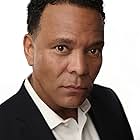The Trap
- Episode aired Apr 10, 2024
- TV-MA
- 1h
Lucy and Maximus learn about Vault's 4 refugee policy and uncover unsettling secrets. Meanwhile, the Ghoul has flashbacks to his former life, where he learned of his wife's role in a Vault-T... Read allLucy and Maximus learn about Vault's 4 refugee policy and uncover unsettling secrets. Meanwhile, the Ghoul has flashbacks to his former life, where he learned of his wife's role in a Vault-Tec conspiracy.Lucy and Maximus learn about Vault's 4 refugee policy and uncover unsettling secrets. Meanwhile, the Ghoul has flashbacks to his former life, where he learned of his wife's role in a Vault-Tec conspiracy.




























